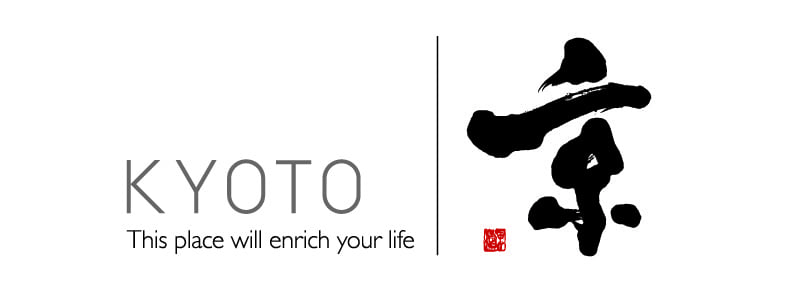Term archive

投稿タイプ:column
Temples, shrines and abundant natural beauty: Six of the most photogenic spots in Otokuni

投稿タイプ:videos
Welcome back to Kyoto
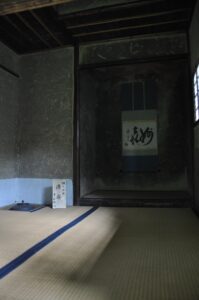
投稿タイプ:sightseeing
Myokian Temple
Myokian, located in the Otokuni Bamboo Grove area of Kyoto Prefecture, is the branch temple of the Tofukuji school of Rinsai Buddhism which was built between 1492 and 1501 during the Muromachi period.
The temple is famous for its tea room called “Taian” which is the only existing tea room that is said to have been made by Sen no Rikyu, the founder of Japanese tea ceremony, and is designated as a national treasure. In 1582, there was a battle between Hideyoshi Hashiba (Toyotomi) and Mitsuhide Akechi. After his victory, Hideyoshi built a castle on the summit of Mt. Tenno and it is said that he lived for a while and invited Sen no Rikyu to build several tea rooms in the area.
The building is gabled and has a thatched roof. The room is only 2 tatami mats (approx. 3m2), which is different from standard of 4 and a half tatami mats at that time. It was also the first tea room with a small entrance and exit for customers, or “Nijiriguchi”, and was the origin of one of the Japanese architectural styles called "Sukiya-zukuri," thus influencing many later tea rooms.
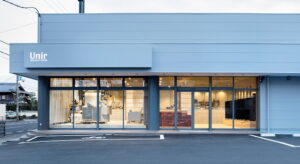
投稿タイプ:restaurants
Unir – The Japanese Barista Champion
Unir is a specialty coffee roaster and cafe run by Tomoko Yamamoto and her husband. Tomoko represented Japan in the "World Barista Championship 2019", which decides the best barista in the world. In the store, you can purchase Unir's carefully selected specialty coffee while watching the roasting machine at work. You can also enjoy lunch made by a professional chef, sweets made by a pastry chef, and of course Unir coffee brewed by one of the best baristas in Japan.
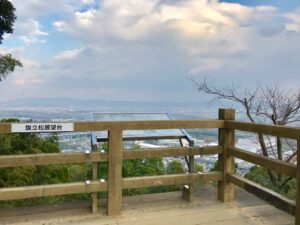
投稿タイプ:sightseeing
Mt Tenno Hatatatematsu Observatory and Yamazaki Castle Ruins
Hatatatematsu Observatory and Yamazaki Castle Ruins are located on Mt Tenno in Oyamazaki City in "Kyoto Otokuni Bamboo Grove" area of Kyoto Prefecture. The mountain has well maintained trails that even the elderly and children can enjoy and the area has been named as one of the “200 Best Nature Spots in Kyoto.” In 1582, Mitsuhide Akechi and Hideyoshi Toyotomi fought a battle for control of Mt. Tenno at the battle of Yamazaki. During the battle, it is said that Hideyoshi raised his flag from the top of an old pine tree; raising the morale of his army and turned the tide of the battle. At the 8th station along the Tennozan hiking course, a pine tree stands in this location along with an observatory that allows you to look out over valley where three rivers; the Katsura, the Uji, and the Kizu merge.
After winning the battle, Hideyaoshi build Yamazaki Castle at the top of Mt. Tenno which allowed him to cement his control over the region and eventually helped him unify Japan. It is said that Hideyoshi held a tea ceremony with Sen no Rikyu who is considered the founder of Japanese tea ceremony as we know it today. The castle site still contains many parts of the castle such as; the castle tower, earthworks, moat, well, and stone walls.
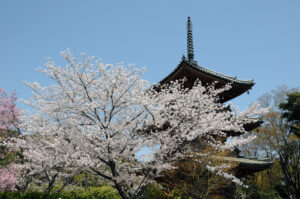
投稿タイプ:sightseeing
Hoshakuji Temple
Hoshakuji Temple is located on the south side of Mt. Tenno (270m) near Oyamazaki Town on the border between Kyoto and Osaka Prefectures. The temple is beautiful year round with cherry blossoms in spring and autumn leaves in autumn. Every year on the third saturday in April, a large festival called "Oni Kusube" is held to smoke out bad demons and dispel disasters which culminates in the Fukumochi ceremony, which is said to grant health, wisdom, and wealth.
According to temple records, Hoshakuji was built by the monk Gyoki who received the decree from Emperor Shomu in 724 (Jinki 1), and the "Uchide" and "Kozuchi" enshrined at the temple were given to Emperor Shomu by the dragon god in a dream. In Japanese folk tales, these mallet like items are is said to create anything you want when used, and are often seen as a symbol of wealth. By praying with them, the worshipers hope to have good luck, making the temple known as the "Treasure Temple."
In addition, the temple hold many other treasures, such as the three-storied pagoda, which is said to have been built overnight by Toyotomi Hideyoshi during the Momoyama period, the eleven-faced Kannon Bodhisattva principal statue, and the Enma Daio sitting statue are powerful and overwhelming. This collection lead to the temple being designated as an “Important National Cultural Property.”
The area has also been a major transportation and military hub since ancient times. In 1582 (Tensho 10), the mountain was the stage of the "Battle of Yamazaki" where Hideyoshi Hashiba (Toyotomi Hideyoshi) and Mitsuhide Akechi fought and it is said that Hideyoshi's headquarters was located at Hoshakuji Temple. At the side of the main hall, there is a stone called "Syuuse-ishi" or "Success Stone", which is said to have been used by Hideyoshi to sit down and think about the unification of the world. Because of its importance you need permission to actually sit down.
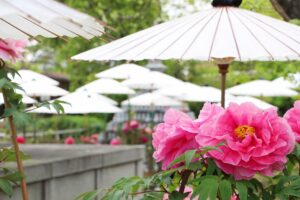
投稿タイプ:sightseeing
Otokuni-dera Temple
Otokunidera is said to have been built by Prince Shotoku and is the oldest temple in Nagaokakyo City. Kukai and Saicho are also said to have met for the first time at this temple and exchanged ideas about Esoteric Buddhism. It is also famous as "Peony Temple". Every year around late April, about 2000 peony flowers from 30 different species are in full bloom and you can enjoy the elegant scenery of white Japanese umbrellas and colorful peony flowers.
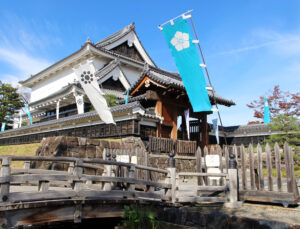
投稿タイプ:sightseeing
Shoryuji Castle Park
Shoryuji Castle in Nagaokakyo City is a castle with an intriguing history. It was rebuilt in 1571 by Fujitaka Hosokawa, who was ordered by Oda Nobunaga to build the most advanced castle at that time. It became the cornerstone of Kyoto’s defense and is an excellent example of Oda Nobunaga's style of castle building.
Furthermore, Akechi Mitsuhide's daughter, Garasha, married Tadaoki Hosokawa and spent two years in Shoryuji Castle. Mitsuhide himself, after losing to Hideyoshi Hashiba in the Battle of Yamazaki, returned to Shoryuji Castle to spend his last night.
Shoryuji Castle is currently maintained as a park and has been selected as one of the "100 Best Historical Parks in Japan". Every year on the second Sunday of November, the Nagaokakyo Garasha Festival is held which includes a historical prossession parade through the city.
The commemorative "Gojo-in" stamp from the castle is also very popular.
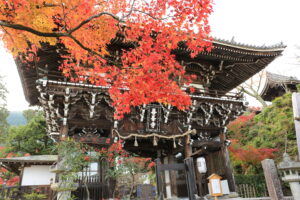
投稿タイプ:sightseeing
Yoshimine-dera Temple
Yoshimine-dera Temple, located in Nishikyo-ku, Kyoto, is a Tendai Buddhist Temple and is the 20th temple of the Saigoku Kannon Pilgrimage. The Temple is said to have been built by the famous monk Gensan in 1029 with a statue of a thousand-armed Kannon, or the bodhisattva known as Avalokiteśvara, as the main statue. The temple once included 52 buildings but most were burned down during the Ōnin War (1467-1477). After the war, the temple was rebuilt by Keishoin, the mother of Tsunayoshi Tokugawa, the fifth Tokugawa shogun, and now includes nearly 20 temples including the “Tahoto,” which is designated as an important cultural property of the country.
The grounds are large (almost 25 acres) and includes gardens perfect for an afternoon stroll and overlook Kyoto city. A highlight is a pine tree there is a pine tree called "Yuryu no Matsu", which is only about than 2m high but extends more than 37m wide and is designated as a national natural monument.
The grounds are a great place to enjoy seasonal flowers throughout the year as well, but they are especially famous for its cherry blossoms in spring and autumn leaves in autumn. In spring, more than 100 cherry blossoms of various types such as Higan cherry, weeping cherry, and peony cherry blossoms bloom for a month. In autumn, not only the grounds but also the entire mountain side are dyed red with autumn leaves.

投稿タイプ:videos
Discover your own KYOTO

投稿タイプ:videos
Discover your own KYOTO | Kyoto Otokuni Bamboo Grove

投稿タイプ:itineraries
Relax in nature and tour some of Kyoto’s photogenic locations
This course begins following some sightseeing in nearby Nara, famous for its historical temples amongst natural settings. Today, we're setting out to explore some of Kyoto Prefecture's photo-worthy locations, with some breaks in relaxing, nature-filled spots. From Nara Station, head first to beautiful Gansen-ji Temple, known for its three-storied vermillion pagoda in the forest, as well as gorgeous hydrangea that bloom in June. Next, head to Keihanna Commemorative Park for a relaxing stroll through its landscape garden, as well as access to a variety of activities and events. From there, its on to Uji for some scrumptuous matcha sweets, and a sight of famous Byodo-in Temple. On day two, rent a bicycle and head to eastern Kyoto's bamboo forest for some wonderful sights, and some tea time. After a final stop for more exquisite hydrangea at Yokoku-ji Temple, be sure to try the local specialty of bamboo shoot macarons!
